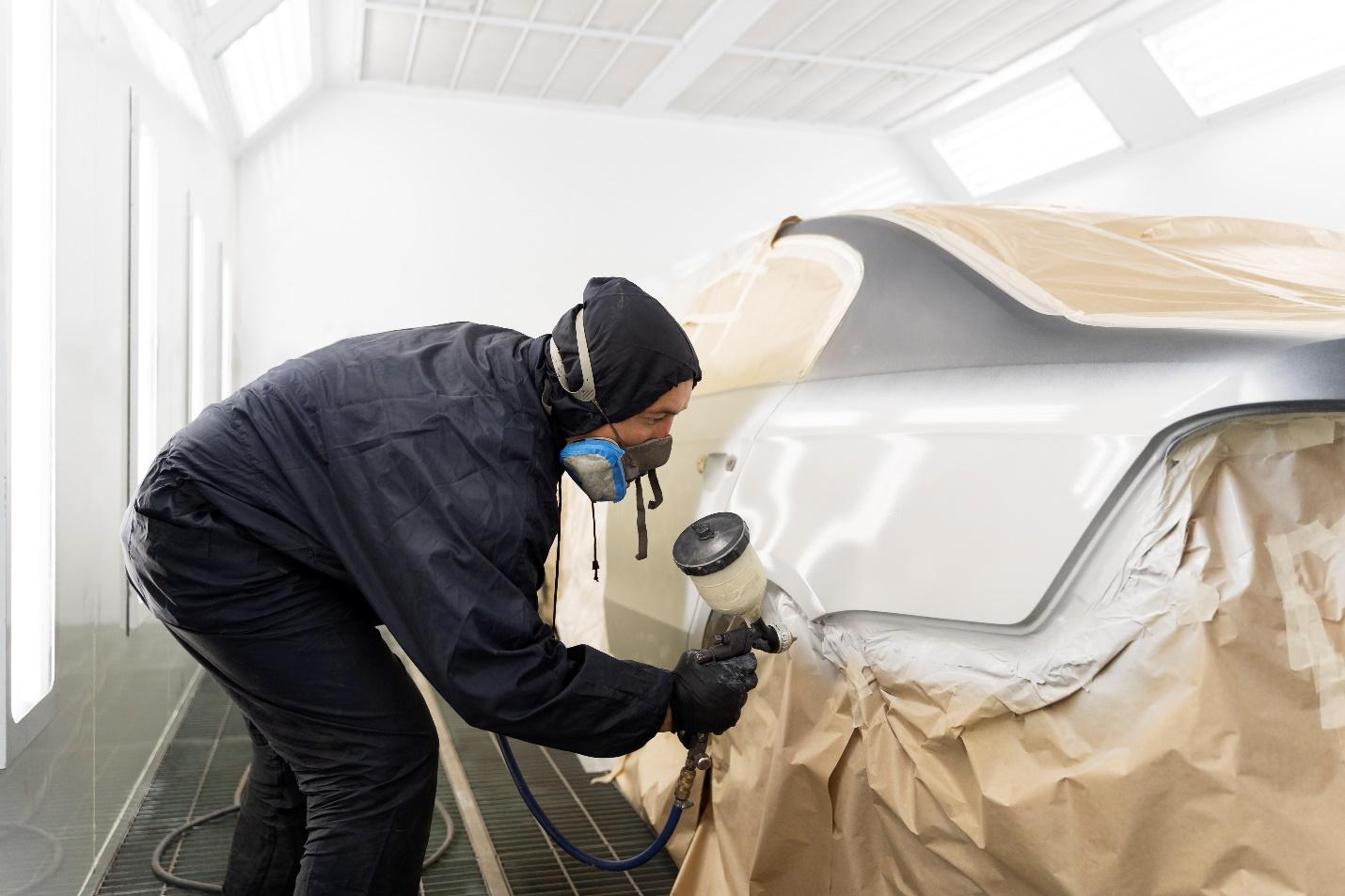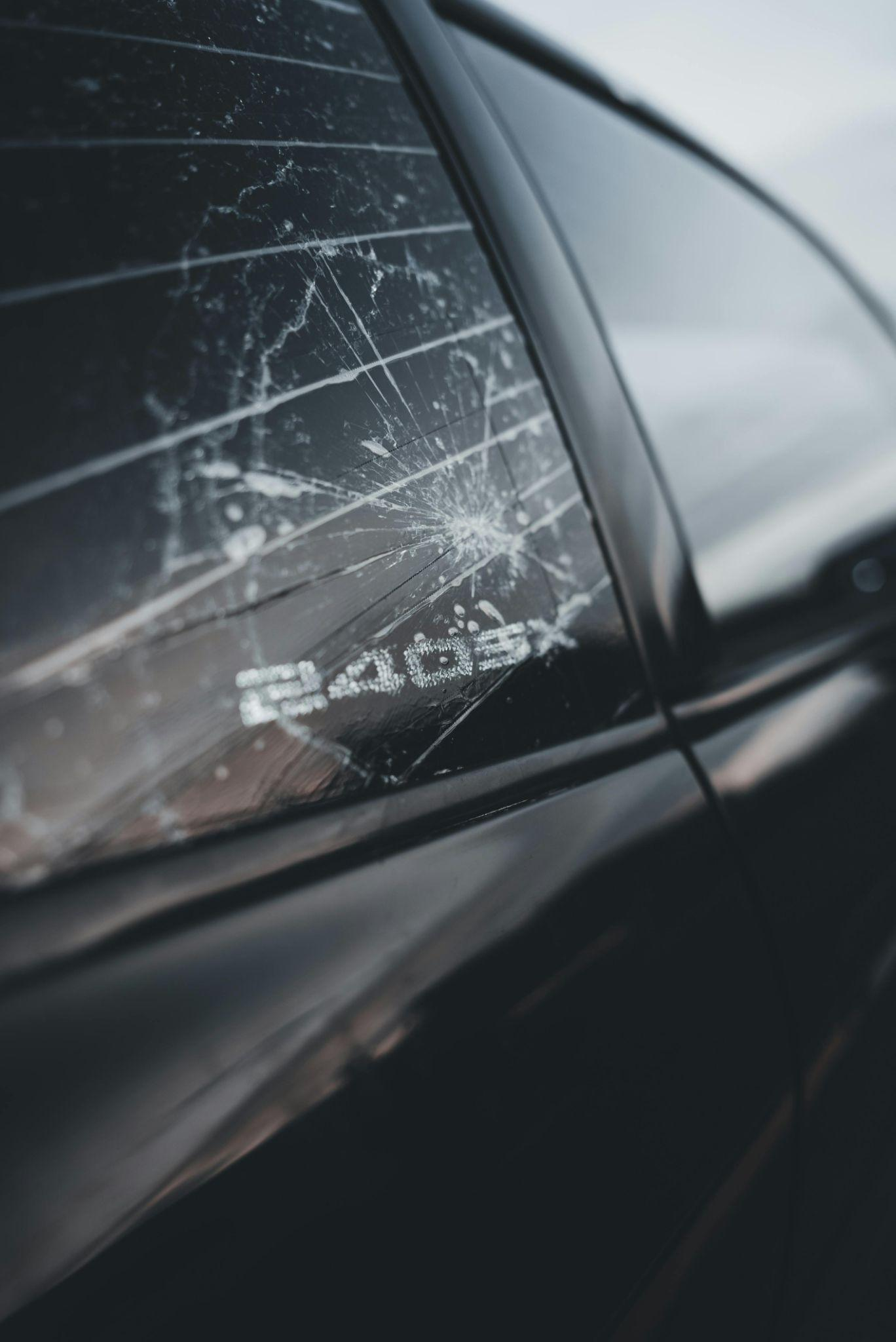Hailstorms can turn a quiet driveway into a repair checklist in minutes. What looks like harmless ice often leaves dents, cracks, chips, and water risks that reduce safety and resale value. This guide explains the five most common types of hail damage and the best ways to fix them, so you can act quickly and protect your vehicle.
Everything here is written for everyday owners, and where it helps, we point out when a professional hail damage repair will save you money and time. When you are ready, Prodent can take care of the work from start to finish.
1. Dented Body Panels
Dents on hoods, roofs, trunks, and doors are the signature mark of a hailstorm. Small dimples often number in the dozens, while larger stones can create sharp impressions that crease the metal.
Beyond appearance, clustered dents make panels harder to clean, allow water to sit, and can strain paint over time. Left alone, those stressed points can crack the clear coat and invite corrosion, especially on horizontal surfaces that face the sun and rain all day.
The gold standard for dent removal after hail is paintless dent repair. A trained technician reaches behind the panel and gently massages the metal back to its original shape using specialized rods and paddles.
Because the factory paint remains intact, color matching is not required and the repair stays invisible in different light. Shallow dents respond best. Sharper dents that have stretched the metal or creased an edge may still be candidates, but they take longer and require advanced access.
If the paint has cracked or the panel is kinked, a blended refinish or full panel replacement becomes the correct fix.
2. Cracked and Chipped Glass
Windshields absorb direct impacts and frequently develop chips that spider out into visible cracks. Side and rear glass suffer as well, and modern laminated windshields are part of the vehicle’s safety structure, supporting airbags and roof strength.
Even a small chip can travel across the glass when the cabin heats up in the sun or the defroster blasts cold mornings, turning a quick repair into a full replacement.
Small, clean chips can often be repaired by injecting a clear resin that bonds the layers and restores optical clarity. This is a precise process that works best soon after the impact, before dust and moisture enter the chip.
Long cracks, multiple impacts, or damage in the driver’s primary field of vision call for replacement. With newer vehicles, camera and radar systems may sit behind the glass. After replacement, those systems may require calibration to ensure lane-keeping and emergency braking work properly.
3. Paint Chips and Exposed Metal
Hailstones can chip clear coat and paint, exposing the primer or bare steel underneath. At first, the spots may appear as tiny white dots or sharp-edged nicks that are easy to ignore. Over weeks and months, heat, rain, and road dirt widen the damage. Bare metal oxidizes, primer absorbs moisture, and a tiny chip turns into a stain that is far harder to hide under new paint.
Small chips can be stabilized with a matched touch‑up system. The key is careful cleaning, proper primer if the metal is visible, thin color application, and a final clear coat to seal the repair.
When chips cluster or the edges have lifted, a professional refinish blends new paint into adjacent panels to keep the color even under sun, shade, and night lighting. Modern finishes vary by manufacturer and age, so experience in color matching matters.
4. Broken Lights and Damaged Mirrors
Headlights, taillights, fog lamps, and mirrors are frequent hail casualties. Impact can crack lenses, break internal mounting tabs, or shatter mirror glass. A cracked lens lets water in, fogs the housing, and shortens bulb life.
On the road, reduced brightness affects safety and may violate local regulations. Mirror damage also makes lane changes harder and can interfere with blind‑spot indicators and integrated turn signals.
Minor scuffs on lenses may polish out if the plastic is otherwise intact. Once a lens is cracked or a housing no longer seals, replacement is the correct fix. Mirror glass can sometimes be swapped separately, but cracked housings or failed motors typically mean a complete assembly. Newer vehicles route camera feeds and sensors through lights and mirrors, so proper alignment and testing are essential.
5. Roof and Hood Deformation
Roofs and hoods present large, flat targets, so they often collect the densest patterns of dents. On some cars, repeated impacts can slightly distort reinforcement braces beneath those panels.
The result is the familiar pockmarked look on top, and a subtle loss of panel tension that makes the metal pop when pressed. Sun and rain emphasize these flaws, and appraisal values suffer because buyers see the damage immediately.
When the paint is intact and the metal has not stretched, paintless dent repair remains the fastest, most cost‑effective solution. Technicians gain access through factory openings to address each impact, returning the panel to a uniform contour.
If braces have separated or the panel has a sharp crease, a hybrid approach is used. The sharp areas are reshaped and refinished, while the rest of the dents are handled by PDR to minimize paintwork.
Why Quick Action Pays Off?
Every hail repair gets harder when time passes. Moisture creeps under chipped paint. Heat cycles lengthen windshield cracks. Dirt embeds in damaged clear coat and complicates refinishing.
Quick professional inspection preserves repair options. You are more likely to qualify for paintless dent repair, simpler glass fixes, and smaller blend areas when the vehicle comes in clean and early. You also lock in clearer documentation for insurance, which speeds approvals and avoids disputes about later, unrelated damage.
What to Do First After a Hailstorm?
If the storm has just passed, start with a quick safety check. Look at the windshield for cracks that might expand, and scan the lights to confirm they still work. Wipe away standing water so you can see dents clearly.
Avoid high‑pressure washing until a technician has inspected chipped paint, since forceful streams can lift loose edges. If you must drive before repair, place a clear patch over small windshield chips to keep dirt and moisture out, and park under cover to prevent sun and rain from worsening exposed spots.
Can You Fix Hail Repairs Yourself?
DIY kits can help with very small paint chips if you match the color and apply thin layers. Suction devices and hot‑cold tricks you see online are risky. They often stretch metal, disturb clear coat, or create high spots that require more extensive correction. Glass repair resins require skill and the right tools to remain invisible.
With modern paints, sensors, and safety systems, professional repair prevents a small issue from turning into a larger paint job, a replacement panel, or a misaligned camera that affects driver‑assist features. Prodent pairs experienced technicians with the correct tools and lighting to ensure the result looks right in any conditions.
Conclusion
Hail creates five common problems for cars. Dented body panels affect appearance and value. Cracked or chipped glass threatens safety. Paint chips expose metal and invite corrosion. Damaged lights and mirrors reduce visibility and compliance.
Roof and hood deformation harms both structure and resale. The fastest, most cost‑effective fix is to act early and use proven methods such as paintless dent repair, professional glass services, and precise refinishing where needed.
If your vehicle has just weathered a storm, book an inspection with Prodent and get a clear repair plan that protects your investment. You can email us at info@prodent.com, call +971 50 659 3368, or send a message through our Contact Us page.
Frequently Asked Question
Paintless dent repair works when the paint is intact and the metal has not stretched or kinked. Technicians inspect dent depth, location, and access points. If edges are sharp or paint is cracked, a blended refinish or panel replacement may be better.
Chips smaller than a coin and away from the driver’s critical view are often repairable with injected resin. Long cracks, multiple impacts, or damage near edges usually require replacement. Modern vehicles may also need camera calibration after new glass.
Hail is generally treated as a comprehensive claim stemming from weather, not driver fault. Policies differ by carrier and region. Many customers do not see a surcharge for a single weather claim, but your insurer can confirm how your plan handles it.
It is usually safe to drive with cosmetic dents, but paint chips that expose metal can rust and spread. Cracked glass or broken lights affect safety and may violate regulations. Early repair prevents bigger problems and keeps value intact during resale.
Repair time depends on damage density and parts availability. Paintless dent repair for moderate hail can be completed quickly, often within a couple of days. Glass replacement and refinishing add time for curing and any required calibrations to safety systems.



